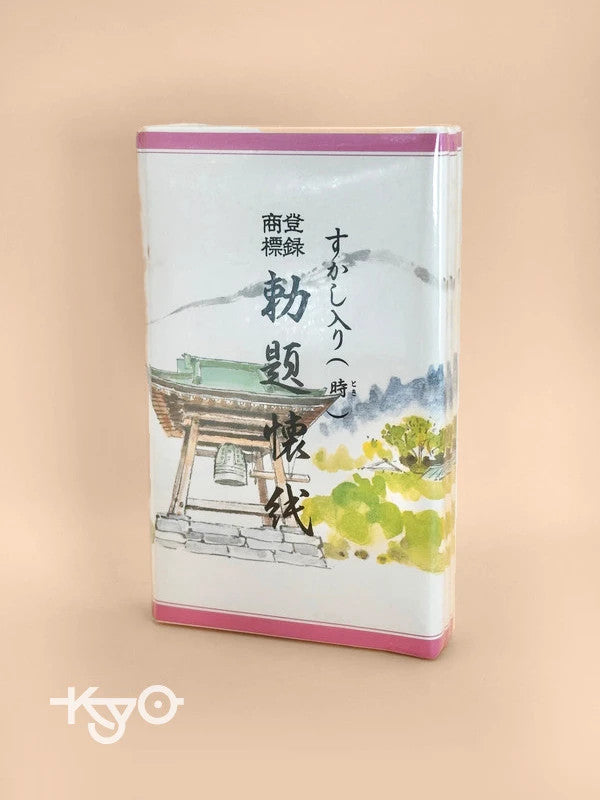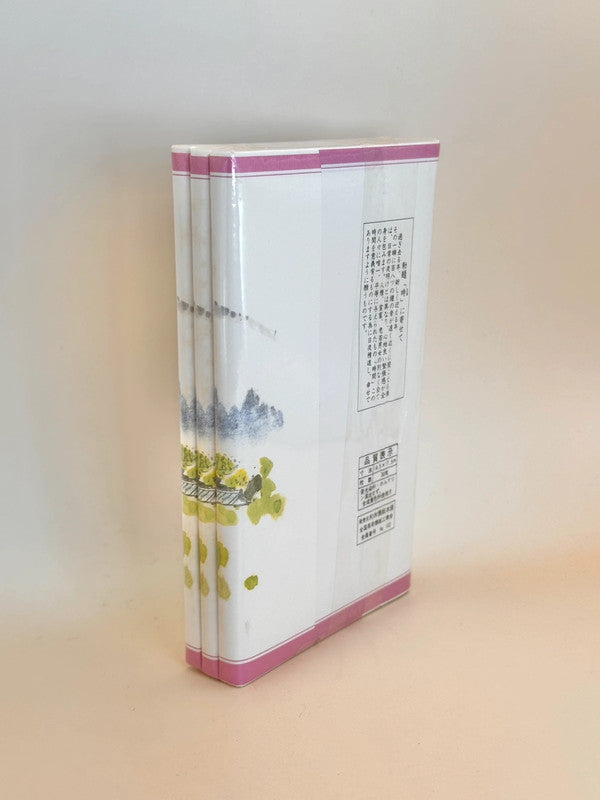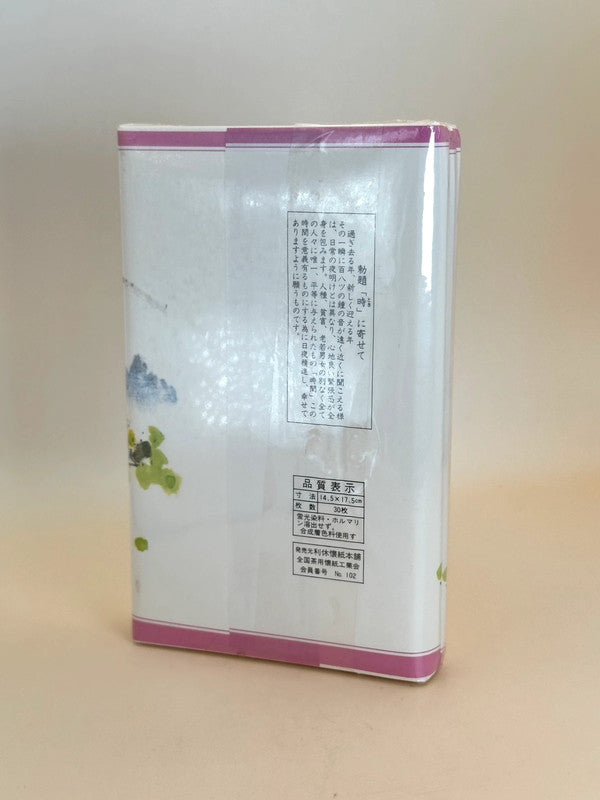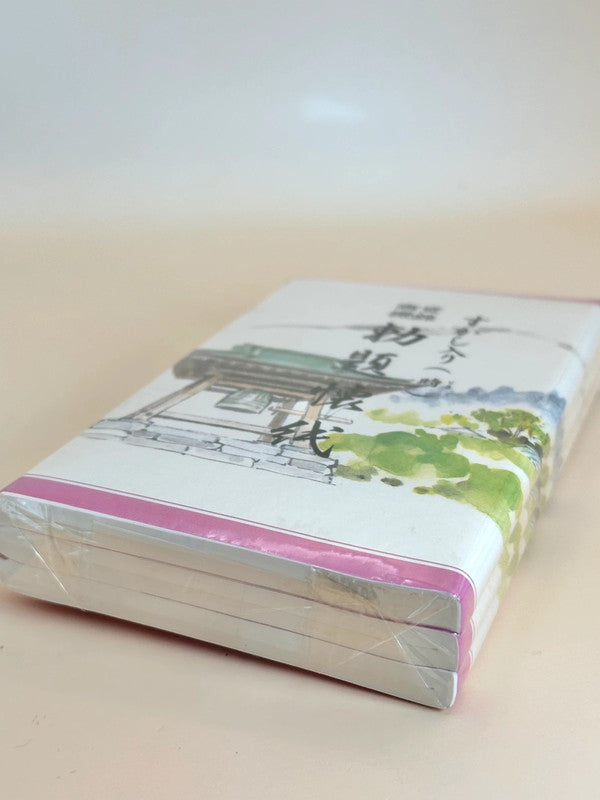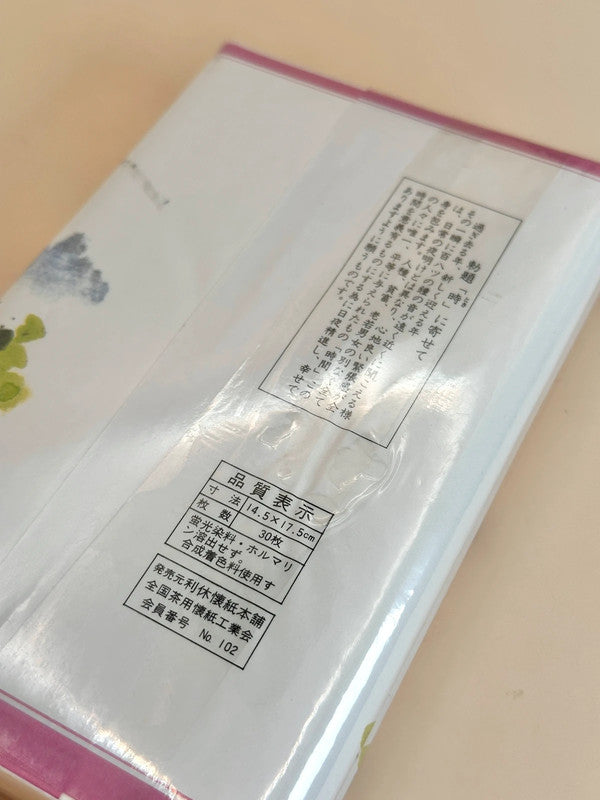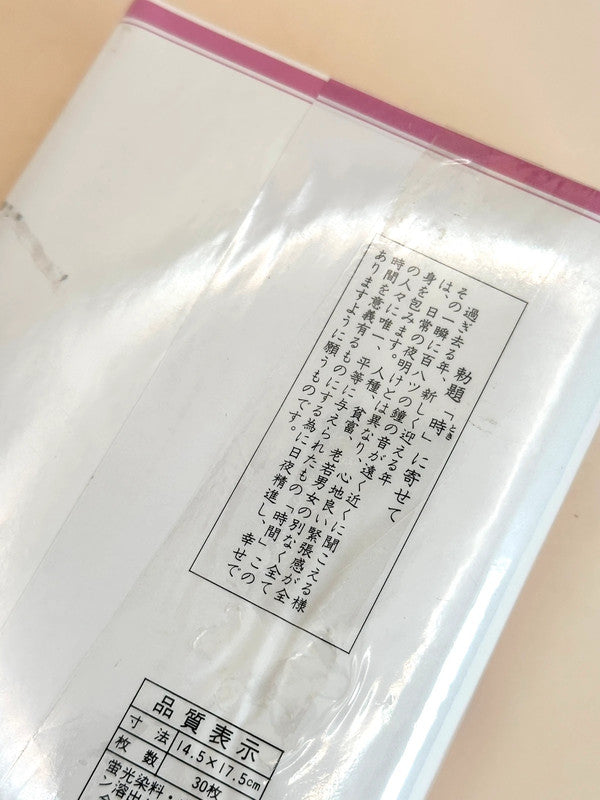TB27 - Japanese tea ceremony - Chokudai Kaishi 勅題懐紙
TB27 - Japanese tea ceremony - Chokudai Kaishi 勅題懐紙
Old product never been used and opened. 懐紙(Kaishi) is a type of Japanese paper, originally carried in the front fold of a kimono, and is still widely used in the Japanese tea ceremony. While kaishi can serve many purposes—such as writing poetry, wrapping small items, or serving sweets—its most refined and culturally significant role is within tea gatherings (茶道 / sadō). In this context, kaishi is used as a surface on which to present seasonal sweets (和菓子), to gently wipe one’s fingers or the edge of a tea bowl, and even to subtly express the host’s attentiveness to seasonal and aesthetic detail.
勅題懐紙(Chokudai Kaishi), referring to kaishi paper that reflects or is inspired by the annual poetic theme announced by the Japanese Imperial Household. These themes are traditionally used for composing waka poetry, and by incorporating them into kaishi paper, the user brings a touch of poetic sentiment and cultural depth to their tea practice or written expressions.
This pack of paper is inspired by the tranquil imagery and sounds of a temple bell ("鐘の音") at dusk, marking the passage of time and inviting quiet reflection. The poetic text on the back emphasizes the idea of pausing in the moment, listening to the bell's chime as a way to reflect on the day and embrace a sense of spiritual clarity and peace.
In essence, this is not merely writing paper. It is a medium of quiet elegance, meant to accompany moments of contemplation, hospitality, and seasonal awareness. Whether used to serve sweets, compose a poem, or reflect on a fleeting moment, 勅題懐紙 represents a beautiful fusion of utility and aesthetic spirit, deeply rooted in Japanese tradition.
Specifications:
Size: 14.5 cm × 17.5 cm
Sheets: 30 sheets x 3 packs
Material: Non-fluorescent, acid-free pulp
Country of Origin: Japan
Share
